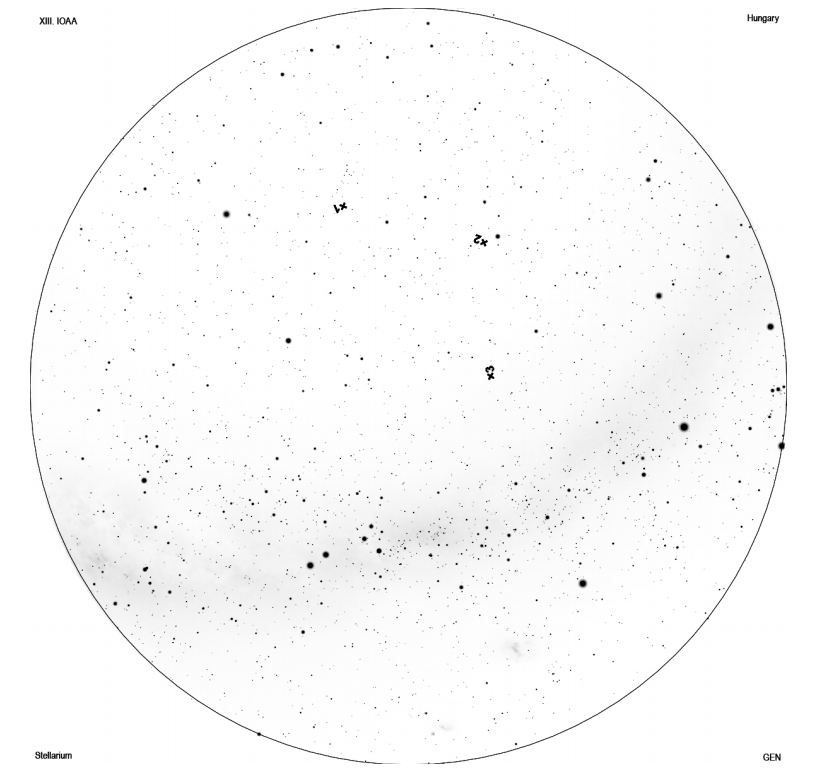2019年IOAA天文馆观测第2题
英文题目
PROBLEM 2
We are standing somewhere on the Earth. The projected sky does not show any Solar System objects.
QUESTIONS / TASKS:
2.1. Determine the geographical latitude of this observing site:
In which hemisphere is the site situated? N / S (Circle the right one.)
2.2. Determine the azimuth of the 3 brightest stars on the projected sky. Azimuth is measured from North towards the East. Write the name of these stars in English or using their Bayer designation and their azimuths in the list below.
Bright star / name: Az:
Bright star / name: Az:
Bright star / name: Az:
2.3. Yellow × signs show the position of 3 comets. Which comet is closest to the ecliptic? (Circle the number below.) 1 / 2 / 3
2.4. List nine constellations that contain circumpolar stars seen from the given observing site. (Use the official IAU abbreviations or IAU designation.)
2.5. Mintaka (δ Orionis) is setting at this moment. How many hours earlier did it rise? (To an accuracy of 15 minutes.)
中文题目
问题2
我们站在地球上的某个地方。投影的天空不显示任何太阳系天体。
问题/任务:
2.1。确定该观测站点的地理纬度:
该位置位于哪个半球? N / S(圈出正确的。)
2.2。确定投影天空上3颗最亮恒星的方位角。方位角是从北向东测量的。在下面的列表中用英语写下这些星星的名称或者它们的拜耳名称及其方位角。
亮星/名字:Az:
亮星/名字:Az:
亮星/名字:Az:
2.3。黄色×标志显示3颗彗星的位置。哪颗彗星最接近黄道? (圈出下面的数字。) 1/2/3
2.4。列出从给定观测站点看到的位于拱极圈的九个星座。 (使用IAU官方缩写或IAU指定名称。)
2.5。 Mintaka(δOrionis)正在落下。它在几个小时之前升起? (精确到15分钟。)
